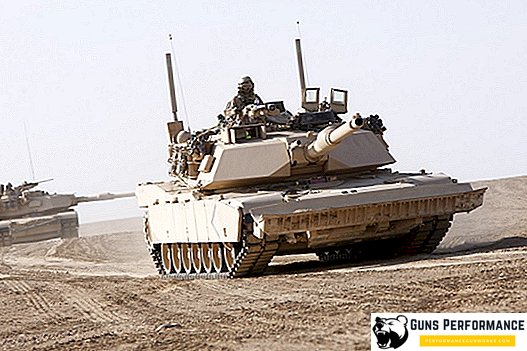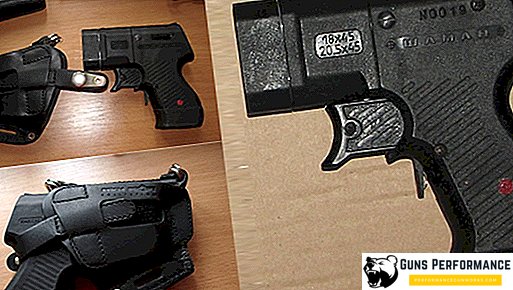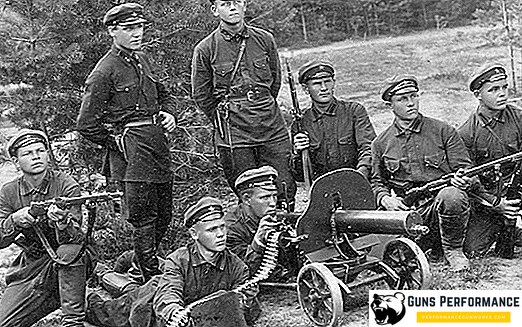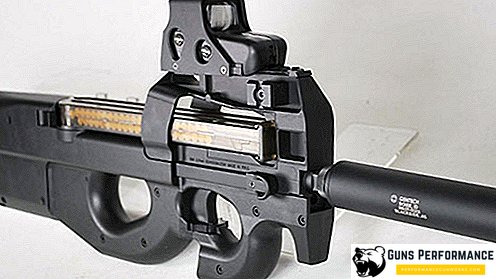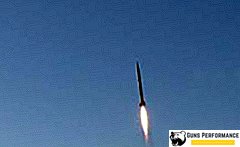For more than 30 years after World War II, the Soviet Union was in a state of peace, not taking part in any major military conflicts. Thus, Soviet military advisers and soldiers participated in wars and conflicts, but they did not take place on the territory of the USSR and were essentially insignificant in terms of the scope of participation of Soviet citizens in them. Thus, the Afghan war became the largest armed conflict since 1945, in which Soviet soldiers and officers took part.
Historical background
Since the 19th century, there was a peaceful struggle between the Russian and British empires, aimed at expanding the sphere of influence in the Central Asian region. At the same time, Russia's efforts were aimed at joining the lands that lay along its southern suburbs (Turkestan, Khiva, Bukhara), and of Great Britain - towards the colonization of India. It was here already in 1885 that the interests of both powers first collided. However, it did not come to war, and the sides continued to colonize the lands that were in their spheres of influence. At the same time, Afghanistan was a cornerstone in relations between Russia and Britain, a very advantageous position that would allow for decisive control over the region. At the same time, the country remained neutral, extracting its own benefits from such a situation.

The first attempt of the British crown to subdue Afghanistan was made as early as 1838-1842. Then the British expeditionary forces stumbled upon the stubborn resistance of the troops of the Afghan emirate, as well as the partisan war. The result was the victory of Afghanistan, the preservation of its independence and the withdrawal of British troops from the country. However, the presence of Britain in the Central Asian region has increased.
The next attempt of the British to seize Afghanistan was the war, which lasted from 1878 to 1880. During this war, British troops again suffered a series of defeats from the Afghan army, but the Afghan army, in turn, was defeated. As a result, Afghanistan became a British protectorate, and the southern part of the country was annexed to British India.

However, this state of affairs was also temporary. The freedom-loving Afghans did not want to remain under the control of the British, and discontent quickly matured in the country. However, a real chance to get rid of the British protectorate appeared in Afghanistan only after the First World War. In February 1919, Amanullah Khan ascended the throne in Afghanistan. He was supported by representatives of the "Young Afghans" and the army, who wanted to get rid of, finally, the oppression of the British. Already upon assuming the throne, Amanullah Khan declared the country's independence from Britain, which caused the invasion of British troops. The 50,000-strong Afghan army was quickly defeated, but the powerful national movement almost wiped out the British military victories. Already in August 1919, a peace treaty was signed between Afghanistan and Britain, according to which Afghanistan became a completely independent state, and its border lay along the Durand line (the modern Afghan-Pakistan border).
In foreign policy, the most obvious was the orientation toward the young Soviet state. So, here came the Soviet military instructors, who allowed to create quite combat-ready Air Force, as well as those who participated in the hostilities against the Afghan rebels.
However, the north of Afghanistan became a haven for the mass migration of residents of Soviet Central Asia who did not want to accept the new government. Detachments of basmachs were formed here, which then carried out partisan attacks on the territory of the USSR. In this case, the financing of the armed forces was conducted by the UK. In this regard, the Soviet government sent a note of protest to Amanullah Khan, after which the channels of English aid to the Basmachis were substantially stopped.

However, in Afghanistan itself was far from calm. Already in the fall of 1928, a new uprising broke out in the east of the country, Habibullah, who also received support from Britain. As a result, Amanullah Khan was forced to flee to Kandahar, and Habibulla seized power. The result of this was the complete immersion of Afghanistan into the abyss of anarchy, when absolutely everything was subjected to pogroms: schools, hospitals, kishlaks.
Thus, by April 1929 a difficult situation had arisen: the legitimate ruler of Afghanistan, Amanullah Khan, was in Kandahar, forming an army of people loyal to him. In Kabul, however, was Habibullah, who continued to impose the cruel laws of Islamic fundamentalism. In this situation, the Soviet leadership decided to help the legitimate leader of Afghanistan regain power in the country. On April 15, Soviet troops under the command of Soviet military attache V. Primakov crossed the border of Afghanistan and began active hostilities against supporters of Habibullah. Events from the first days developed unambiguously in favor of the Red Army, and the number of losses correlated approximately 1: 200 in its favor. However, the successes of the operation, achieved within a month and a half, were frustrated by the flight of Amanullah Khan to India and the cessation of his struggle for power. After that, the Soviet contingent was withdrawn from the country.

In 1930, the Red Army again launched a campaign against the territory of Afghanistan in order to defeat the basmachi gangs based there and destroy their economic bases and supply bases. However, the Basmachis did not accept the battle and retreated to the central regions of the country, as a result of which the continued presence of the Soviet troops in Afghanistan became not only inexpedient, but also diplomatically dangerous. In this regard, the Red Army left the country.

In Afghanistan itself, the civil war subsided only at the end of 1929, when Habibullah was overthrown by Nadir Shah (the latter became the king of Afghanistan). After that, the country continued to develop, albeit extremely slowly. Relations with the Soviet Union were quite close, thanks to which the country had many benefits from this, mainly economic ones.
At the turn of the 1950s-1960s, popular democratic movements, including Marxist, began to emerge in Afghanistan. Thus, Nur Mohammed Taraki, the poet’s journal, became the ideological inspirer and leader of the Marxist movement. It was he who, on January 1, 1965, announced the creation of the PDPA, the People’s Democratic Party of Afghanistan. However, the composition of the party was heterogeneous - in its composition were both people from the lower strata of society, and from the middle and even upper. This inevitably led to a conflict within the party and caused its split as early as 1967, when two branches were formed at once: Khalk (the People, the most radical faction) and Parcham (the Banner, a moderate fraction represented mainly by representatives of the intelligentsia).
The monarchy of Afghanistan remained until 1973, when King's cousin Mohammed Daoud headed the anti-monarchist coup and did not as a result come to power as prime minister. The change of the form of government practically did not affect the Soviet-Afghan relations, since Mohammed Daoud continued to maintain close relations with the USSR. The name of the country has changed to the Republic of Afghanistan.
Over the next five years, Mohammed Daoud took steps to modernize Afghan industry and the state as a whole, but his steps did not actually have any results. By 1978, the situation in the country was such that almost all segments of the population were opposed to the conceited Prime Minister. The fact that already in 1976 both factions of the People's Democratic Party - Khalk and Parcham - agreed to cooperate against the dictatorship of Daud can speak about the severity of the political situation.

The revolution and murder of Mohammed Daoud on April 28, 1978, under the leadership of the People's Democratic Party of Moldova and the army, became a milestone in the history of the country. Now in Afghanistan a regime has been established that is very similar and akin to the Soviet one, which could not but cause further rapprochement between the two countries. As in the USSR, Nur Mohammed Taraki, General Secretary of the PDPA Central Committee, who was the leader of the Khalk faction, became head of state. The name of the state has changed to "Democratic Republic of Afghanistan".
Start of civil war
However, in Afghanistan, it was still not calm. In the first place, after the April (or Saur) revolution, the struggle between the factions of the PDPA intensified. Since it was the wing of the Khalk that received the dominant position in the government, the Parchamists began to gradually withdraw from the levers of power. Another process was the departure from the Islamic traditions in the country, the opening of schools, hospitals and factories. Also an important decree was the gratuitous allotment of land to the peasants.
Nevertheless, all these measures, which had the aim of improving life and thus gaining the support of the people, led mainly to diametrically opposite results. The formation of the armed opposition units, consisting mainly of peasants, began, which, in principle, it is not surprising. People who have lived by Islamic traditions for hundreds of years and lost them overnight simply could not accept it. The actions of the Afghan government army, which often inflicted attacks on peaceful villages, whose inhabitants were not associated with the opposition, also provoked discontent.

In 1978, a civil war began, which in fact continues to this day in Afghanistan. At its early stage, this war was fought between the Afghan government and the armed rebels, the so-called "dushmans." However, in 1978, the actions of the rebels were still not sufficiently coordinated and consisted mainly in attacks on Afghan military units and shelling of columns. There were also strikes against party functionaries, but this mainly concerned representatives of the lower-level party.
However, the main signal that the armed opposition was ripe and ready for decisive measures was an uprising in the large city of Herat, which broke out in March 1979. At the same time, there was a real danger of capturing the city, since the Afghan government army was very reluctant to fight against its compatriots, and there were frequent cases of transfer of government soldiers to the side of the rebels.

It was in this connection that a real panic began among the Afghan leadership. It became clear that with the loss of such a large administrative center as Herat, the positions of the government would be seriously shaken. A long series of negotiations began between the Afghan and Soviet leadership. In these negotiations, the Afghan government requested that Soviet troops be sent to assist in suppressing the rebellion. However, the Soviet leadership clearly understood that the intervention of the Soviet Armed Forces in the conflict would only lead to a worsening of the situation, including the international one.
In the end, the Afghan government army was able to cope with the Herat revolt, but the situation in the country continued to deteriorate. It became clear that a civil war was already taking place in the country. So, the government Afghan army was drawn into fighting with the gangs of the rebels, who controlled mainly rural and mountainous terrain. The “people's” Afghan government managed to keep under control only a number of large cities (and not always completely).
In the same context, the popularity of Nura Mohammad Taraki in Afghanistan began to fall, while its prime minister, Hafizullah Amin, was rapidly gaining political weight. Amin was a rather tough politician who believed that only by military means could order be restored in the country.
Undercover intrigues in the Afghan government led to the fact that in mid-September 1979, Nur Mohammad Taraki was removed from all his posts and excluded from PDPA. The reason for this was the unfortunate attempt on the life of Prime Minister Amin, when he arrived at Taraki’s residence for negotiations. This attempt (or provocation, because there is still not enough evidence that Mohammad Taraki himself was involved in the attempt) made him an obvious enemy of Amin, which passed the first death sentence. Taraki was killed in October 1979, and his relatives and friends were taken to Puli-Charkhi prison.

After becoming the ruler of Afghanistan, Hafizullah Amin began to purge both the ranks of the clergy and the rival faction, the Parcham.
The decision to enter the Soviet troops in Afghanistan and the elimination of Amin
At the same time, Amin realized that he could no longer cope with the rebels alone. Increasingly, there have been cases of soldiers and officers moving from the government of the Afghan army into the ranks of the Mujahideen. The only deterrent in the Afghan units were Soviet military advisers who, at times by force of their authority and character, prevented such incidents. During numerous negotiations between the Soviet and Afghan leaders, the Politburo of the Central Committee of the CPSU, after weighing all the pros and cons, at its meeting on December 12, 1979, decided to deploy a limited contingent of troops to Afghanistan.
In Afghanistan, Soviet troops were still in July 1979, when a battalion of the 111th Guards Parachute-Regiment of the 105th Airborne Division was transferred to Bagram (a city about 60 km from Kabul, also a large air base in the country). The duties of the battalion were to control and protect the Bagram airfield, where they landed and from which Soviet aircraft took off with supplies for the Afghan leadership. On December 14, 1979, a battalion from the 345th separate parachute regiment arrived here as reinforcements. Also on December 20, the Soviet "Muslim Battalion" was transferred to Kabul, which received this name because it was packaged exclusively by Soviet servicemen from the Central Asian republics. This battalion was included in the security brigade of the Palace of Amin, ostensibly to strengthen the protection of the Afghan leader. But few people knew that the Soviet party leadership decided to “remove” the too impulsive and obstinate leader of Afghanistan.
There are many versions why it was decided to remove Hafizulu Amin and put Babrak Karmal in his place, but there is no consensus on this matter. It is likely that after restoring order in Afghanistan with the help of Soviet troops, Amin would become too independent, which, with his close contacts with the United States, would endanger the Soviet presence in the country. If the United States were represented by Amin as an ally, the threat to the southern borders of the USSR would become obvious. Also, do not forget that Amin with his wide repressions and the murder of Nur Mohammad Taraki managed in a very short period of time to turn against himself not only the lower strata of Afghan society (who, however, were mostly opposed to the regime), and the Afghan elite. Concentrating great power in his hands, he did not intend to share with anyone. To rely on such a leader for the Soviet leadership would be, to put it mildly, unwise.
By December 25, 1979, two motorized rifle divisions and one airborne division, two motorized rifle regiments, 2 aircraft regiments of fighter-bombers, 2 helicopter regiments, one aviation regiment were prepared for entry into Afghanistan from the Central Asian, Turkestan and Belarusian military districts - assault brigade and rear support units. In addition, three more divisions were formed as a reserve according to wartime states. All these troops were part of the 40th Combined Arms Army, which was to enter Afghanistan.

The manning of troops was carried out mainly by reservists - residents of the Central Asian republics, called up for military training. So, for example, in the 201st motorized rifle division, whose task was to march and take up positions in the area of the city of Kunduz, about half of the personnel were reservists. All this, of course, had a negative effect on the combat training of subunits, but if we consider that the participation of Soviet troops in the hostilities was not planned, then such a “demonstration of force” had its meaning.
Already on December 25, the entry of a limited contingent of Soviet troops (OXV) into Afghanistan began. The first to enter the territory of Afghanistan were the units of the 108th Motorized Rifle Division, as well as units of the 103rd Guards Airborne Division, which were landed in Kabul by landing method. Also on this day, the 4th Airborne Assault Battalion of the 56th Separate Airborne Assault Brigade entered the country, whose task was to take under the protection of a strategically important tunnel on the Salang Pass.
In the period from December 25 to December 31, 1979, almost all the units of the 40th Army, which were intended for this, entered the territory of Afghanistan.
As of March 1980, the deployment of units of the 40th Army was as follows:
- Kabul is the 103rd Guards Airborne Division and the 108th Motorized Infantry Division.
- Баграм - 345-й отдельный парашютно-десантный полк.
- Герат - 101-й мотострелковый полк 5-й мотострелковой дивизии.
- Шинданд - 5-я мотострелковая дивизия.
- Кундуз - 201-я мотострелковая дивизия и 56-я отдельная десантно-штурмовая бригада.
- Кандагар - 70-я отдельная мотострелковая бригада.
- Джелалабад - 66-я отдельная мотострелковая бригада.
- Газни - 191-й отдельный мотострелковый полк.
- Пули-Хумри - 395-й мотострелковый полк 201-й мотострелковой дивизии.
- Ханабад - 122-й мотострелковый полк 201-й мотострелковой дивизии.
- Файзабад - 860-й отдельный мотострелковый полк.
- Джабаль-Уссарадж - 177 мотострелковый полк 108-й мотострелковой дивизии.
- Авиационные части базировались на аэродромах: Баграм, Кундуз, Шинданд, Кандагар, Джелалабад, Файзабад, Газни и Гардез.

27 декабря 1979 года силами группы «Альфа» в резиденции Амина была проведена операция по ликвидации строптивого лидера. В её результате Хафизула Амин был ликвидирован, и в ночь на 28 декабря в Кабул прибыл новый правитель Афганистана - Бабрак Кармаль. В эту же ночь (с 27 на 28 декабря) советские войска, в основном силами 103-й воздушно-десантной дивизии, заняли ряд важных зданий афганской столицы и установили над ними полный контроль.

Начало войны (1979-1982)
Первые потери ОКСВ в Афганистане начал нести ещё в декабре 1979 года. Так, 25 декабря при заходе на посадку на аэродром Кабула Ил-76 с десантниками 103-й воздушно-десантной дивизии врезался в гору. В результате погибли десятки солдат и офицеров.
Уже с первых дней пребывания ограниченного контингента советских войск в Афганистане наши части начали втягиваться в боевые действия, которые поначалу носили исключительно эпизодический характер. Так, 11 января 1980 года подразделения 186-го мотострелкового полка 108-й мотострелковой дивизии взяли штурмом кишлак Нахрин не далеко от Баглана, подавив мятеж афганского артиллерийского полка. При этом потери при проведении операции были чрезвычайно низкими (двое раненных и двое убитых при около 100 убитых афганцах).
Примечательно, что характер первых боевых операций советских войск в Афганистане носил скорее подавление восстаний афганских частей, чем бои с душманами, отряды которых ещё по сути создавались и формировались. Также в задачи советских частей в это время входило поддержание контроля над рядом крупных населённых пунктов страны, разоружение дезертиров и обустройство быта.
Первым боестолкновением советских войск с душманами стала Кунарская операция, проводившаяся с конца февраля по середину марта 1980 года. В ходе этой операции три советских батальона совершили рейд против бандформирований в одноимённой провинции. В результате, нанеся противнику существенные потери, наши войска потеряли 52 человека убитыми.
С начала весны 1980 года война в Афганистане развернулась в полной мере. Для обеспечения контроля над рядом районов, а также для снижения эффективности действий мятежников советские воинские части начали регулярно привлекаться к боевым операциям, нередко во взаимодействии с афганской армией ("зелёными") либо афганскими частями МВД ("царандой"). Боеспособность афганской правительственной армии (в отличие от моджахедов) находилась на весьма низком уровне, что объяснялось нежеланием простых афганцев воевать за то, что сами они толком не знали.
Хоть эффективность действий ОКСВА и была довольно высокой, но и потери с увеличением интенсивности боевых действий резко выросли. Естественно, об этом умалчивалось в официальной советской прессе, которая заявляла, что "советские войска находятся в Афганистане для манёвров, а также для оказания интернациональной помощи братскому народу, заключающейся в строительстве больниц, домов и школ".
К середине 1980 года Политбюро ЦК КПСС приняло решение о выводе из Демократической республики Афганистан ряда танковых и зенитных частей, которые в условиях партизанской войны оказались не нужны. Однако в то же время вопрос о полном выводе советских войск из страны был отложен. Стало ясно, что Советская Армия "увязла" в Афганистане, и этот факт просто не мог остаться незамеченным в ЦРУ. Именно 1980 год характеризуется началом сотрудничества между американскими спецслужбами и афганскими моджахедами.

1981 год для ОКСВА характеризуется дальнейшей интенсификацией боевых действий. В течение первой половины года советские войска вели бои с мятежниками в основном в северных и восточных провинциях Афганистана, однако уже в мае обострилась обстановка в центральном районе страны - возле Кабула. Здесь активизировались действия со стороны группировки Ахмад-Шаха Масуда, чье вотчиной было Панджшерское ущелье, благодаря чему он и получил титул "Льва Панджшера". Целью действий его группировки было расширение района контроля, а также сковывание советских войск во избежание их проникновения в Панджшер.
Тем не менее, к августу 1981 года в Панджшерском ущелье советскими войсками были проведены уже четыре общевойсковые операции. Однако, как и в предыдущие разы, советские войска занимали территорию ущелья, уничтожали часть живой силы противника и его склады с боеприпасами, но надолго удержаться здесь не могли - сказывались трудности в их снабжении вдалеке от мест постоянной дислокации подразделений, а также то, что душманы в такой "глухой" местности действовали исключительно дерзко. Результативность Панджшерских операций серьёзно снижалась тем, что мятежники покидали ущелье загодя, оставляя лишь заслоны из мелких отрядов и минируя тропы.
К концу 1981 года стало ясно, что душманы, имея неистощимый поток добровольцев и снабжения из Пакистана, могут воевать сколько угодно долго. Именно с этой целью, для перекрытия горных троп на юго-востоке, в город Гардез, столицу провинции Пактия, была из Кундуза переброшена 56-я отдельная десантно-штурмовая бригада. Дополнительно усилились действия других советских подразделений у южной границы Афганистана. И действительно, уже в первые месяцы 1982 года удалось существенно сократить поток пополнений и снабжения для моджахедов из Пакистана. Однако в последующие месяцы ввиду активизации действий душман в других районах страны ситуация практически вернулась к своему начальному состоянию. Наиболее ярким эпизодом, свидетельствовавшим о возросших боевых возможностях мятежников, стало окружение ими целого батальона (4-го десантно-штурмового) 56-й десантно-штурмовой бригады в районе Алихейля. Лишь благодаря энергичным действиям руководства бригады, а также грамотному взаимодействию родов войск (авиация, десант и артиллерия) батальон был деблокирован со сравнительно небольшими потерями.
Война продолжается (1982-1987)
1982 год ознаменовался также крупной трагедией на стратегически важном для всего Афганистана тоннеле через перевал Саланг. В ноябре там была совершена диверсионная акция душман, заключавшаяся в том, что выход с одной стороны тоннеля был заблокирован их машинами.
Вследствие этой акции погибло 64 советских солдата, а также более 100 афганцев, в том числе и мирных жителей. Мятежники в погоне за сиюминутным успехом не остановились даже перед убийством своих соотечественников, афганских женщин и детей.
В конце того же 1982 года в Москве была проведена встреча между президентом Пакистана Зия уль-Хаком и главой СССР Юрием Андроповым. В ходе встречи были обсуждены условия прекращения предоставления Пакистаном помощи афганским мятежникам, а также условия вывода советских войск из страны.
В течение 1983 года советские войска в Афганистане продолжали выполнять операции против отрядов вооружённой оппозиции. Однако данный период характеризуется возросшей интенсивностью боевых действий в районе советско-афганской границы (Мармольская операция), а также завершением боёв в Панджшерском ущелье путём подписания перемирия с вооружёнными отрядами Ахмад-Шаха Масуда. Находившийся в ущелье 177-й отряд специального назначения по итогам был выведен из него после 8 месяцев напряжённых боевых действий.

В апреле в провинции Нимроз был разгромлен крупный укреплённый район боевиков Рабати-Джали. Данный укрепрайон также имел и функции перевалочной базы для транспортировки наркотиков. После его уничтожения экономической базе мятежников был нанесён существенный урон, не говоря уже о том, что они лишились мощной базы, способной пропускать большое количество боевиков из Ирана и Пакистана.
Ещё одной "горячей" точкой в отнюдь не спокойном Афганистане летом 1983 года стал город Хост, расположенным на юго-востоке страны, практически вплотную у границы Пакистана. Именно на него в июле начали наступление душманы. Их замысел был прост: захватить город и сделать его столицей "мятежных" районов. Взятие Хоста позволило бы им получить признание в мире.
Однако упорная оборона Хоста внесла коррективы в планы руководства афганской оппозиции. Не сумев взять город сходу, было решено взять его в кольцо блокады. Но и этот план потерпел крах. Советские войска при массированной поддержке авиации и артиллерии сумели сорвать попытку блокады города.
Зима 1983-1984 годов в Афганской войне примечательна тем, что вооружённые отряды оппозиции во время неё впервые не покидали территорию Афганистана, как это имело место быть ранее. Это стало причиной обострившейся обстановки в районе Кабула и Джелалабада, где моджахеды начали обустройство баз и укрепрайонов для долговременной партизанской войны.
Именно в этой связи уже в начале 1984 года было принято решение о проведении советскими войсками операции "Завеса". Её суть заключалась в создании заградительной линии вдоль афгано-пакистанской и частично афгано-иранской границ с целью пресечения снабжения отрядов моджахедов и перехвата караванов, идущих на территорию Афганистана. Для этих целей выделялись довольно крупные силы общей численностью от 6 до 10 тысяч человек и большое количество авиации и артиллерии.
Но операция в конечном итоге не достигла своей цели, так как полностью перекрыть границу с Пакистаном было практически невозможно, особенно столь ограниченными, хоть и мобильными, силами. Перехватывалось лишь 15-20% от общего числа караванов, шедших из Пакистана.
1984 год характеризуется в основном боевыми действиями против вновь созданных перевалочных пунктов и укреплённых районов душман с целью лишения их долговременных баз и в конечном итоге уменьшения интенсивности их действий. В то же время моджахеды вели не только боевые действия, но и осуществили ряд террористических актов в городах страны, как, например, взрыв автобуса с пассажирами в Кабуле в июне того же года.
Во второй половине 84-го года мятежники активизировались в районе города Хост, в связи с чем здесь в ноябре-декабре проводилась крупная армейская операция по сопровождению колонн и прорыва через порядки душман, пытавшихся взять город. В итоге моджахеды понесли крупные потери. Стоит, однако, отметить, что и потери советских войск были весьма ощутимы. Постоянные подрывы на минах, которых к 1984 году на афганских дорогах стало чуть ли не в 10 раз больше по сравнению с начальным периодом войны, неожиданные обстрелы колонн и советских подразделений уже превосходили по уровню потерь обычные огневые контакты с душманами.
Тем не менее, ситуация на январь 1985 года оставалась стабильной. Афганское правительство при прочной поддержке Советской Армии удерживало Кабул и ряд провинциальных центров. Моджахеды же вовсю "хозяйничали" в сельской и горной местности, имея серьёзную поддержку среди дехкан - афганских крестьян и получая снабжение из Пакистана.
Именно с целью увеличить количество перехватываемых караванов, идущих из Пакистана и Ирана, весной 1985 года на территорию Афганистана были введены 15-я и 22-я отдельные бригады специального назначения ГРУ. Будучи разделёнными на несколько отрядов, они были рассредоточены по всей территории страны, от Кандагара до Джелалабада. Благодаря своей мобильности и исключительной боеспособности, отряды специального назначения ГРУ ГШ сумели существенно сократить количество караванов, проводимых из Пакистана, а также, как следствие, серьёзно ударить по снабжению душман в ряде районов.

Тем не менее, 1985 год ознаменовался в первую очередь крупными и кровопролитными операциями в Панджшерском ущелье, а также в районе Хоста и в так называемой "зелёной зоне" ряда провинций. Эти операции обеспечили разгром ряда банд, а также захват большого количества оружия и боеприпасов. Например, в провинции Баглан серьёзные потери были нанесены отрядам полевого командира Саид Мансура (сам он остался жив).
Примечателен 85-й год и тем, что Политбюро ЦК КПСС приняло курс на политическое решение афганской проблемы. Новые веяния, вызванные молодым Генеральным Секретарём М. Горбачёвым, в афганском вопросе пришлись как нельзя кстати, и уже в феврале следующего, 1986 года, началась разработка плана поэтапного вывода советских войск из Афганистана.
В 1986 году отмечается возросшая результативность действий советских войск против баз и укреплённых районов моджахедов, в результате которых были разгромлены следующие пункты: "Карера" (март, провинция Кунар), "Джавара" (апрель, провинция Хост), "Кокари-Шаршари" (август, провинция Герат). В то же время был осуществлён ряд крупных операций (например, на севере страны, в провинциях Кундуз и Балх).
4 мая 1986 года на XVIII пленуме ЦК НДПА на пост генсека вместо Бабрака Кармаля был избран бывший глава афганской службы безопасности (ХАД) М. Наджибулла. Новый глава государства заявил о новом - исключительно политическом - курсе на решение внутриафганских проблем.

В это же время М. Горбачёв объявил о скором выводе из Афганистана ряда воинских частей численностью до 7 тысяч человек. Тем не менее, вывод шести полков из Афганистана состоялся лишь 4 месяца спустя, в октябре. Данный ход был скорее психологическим, направленным на то, чтобы показать западным державам готовность Советского Союза к решению афганского вопроса мирным путём. Тот факт, что ряд выводимых подразделений практически не участвовал в боевых действиях, а личный состав ряда вновь сформированных полков составляли исключительно отслужившие 2 года и демобилизуемые солдаты, никого не смутил. Именно поэтому данный шаг советского руководства являлся весьма серьёзной победой при минимальных жертвах.
Также важным событием, открывшим страницу нового, заключительного периода войны СССР в Афганистане, стало провозглашение афганским правительством курса на национальное примирение. Данный курс предусматривал уже с 15 января 1987 года прекращение огня в одностороннем порядке. Однако планы нового афганского руководства так и остались планами. Афганская вооружённая оппозиция расценила данную политику как причину слабости и активизировало усилия по борьбе против правительственных войск по всей территории страны.



